Tips for Your First Alpine Climbing Trip
During my early climbing adventures, I learned some important lessons that have stuck with me over the years. Here are a few of my hard-won tips to help you prepare for your first alpine climbing trip.
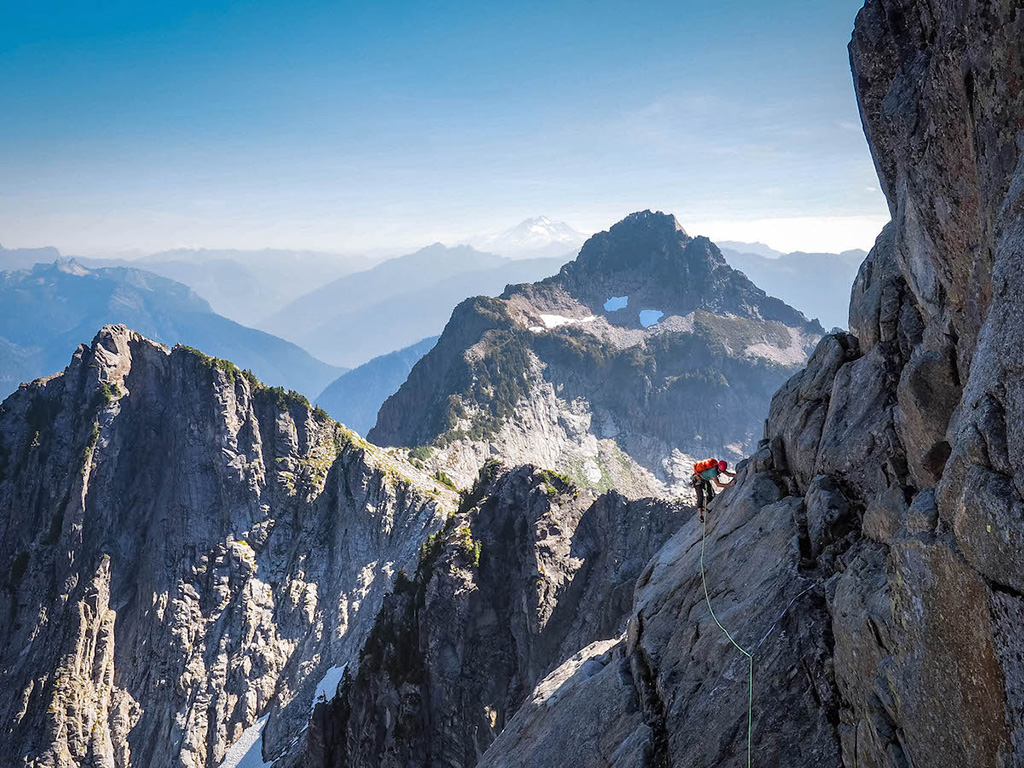
With light fading fast I scrambled across an exposed, chossy ledge searching for any evidence of an anchor.
“Where the hell is this rappel?” I shouted. My voice cracked as I fought back tears.
We were on the tail-end of my first grade IV alpine climb—a glorious ridge traverse in the heart of the Swiss Alps—and everything had gone as planned … until now. Just the thought of spending a night shiver-bivying on this loose, crumbly ledge had me panicking.
But Jarle, my stern Scandinavian climbing partner, looked me dead in the eye, and with a Schwarzenegger-esque accent, uttered three simple words.
Do. Not. Cry.
So I took a few deep breaths and settled my nerves while Jarle pulled out our saving grace—a wrinkled copy of the topo map, revealing the whereabouts of that elusive last rappel. Forty-five minutes later, we were safely on the ground, trudging back to the hut by headlamp, giddy from a long day in the mountains.
Find a partner you can talk to
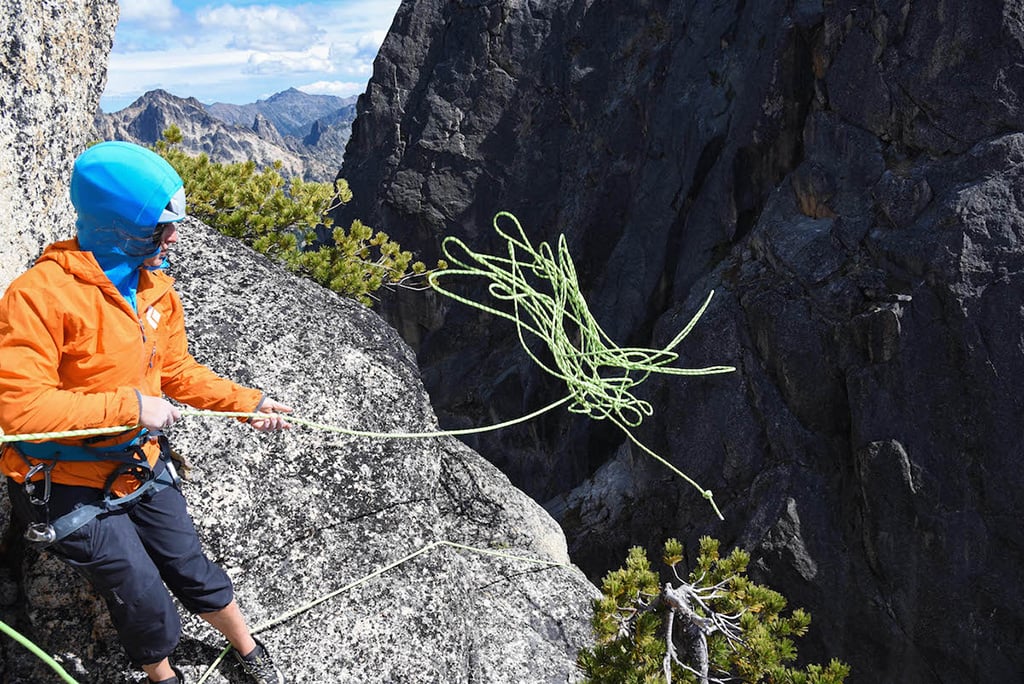
Just like in romantic relationships, a great climbing partnership revolves around good communication. Go on several climbing “dates” and get to know your partner before you tie the knot in the mountains.
I’d suggest picking smaller objectives at first. Try a day of easy multi-pitch rock climbing so you can practice communicating openly with your partner. This comes into play big-time on alpine climbs when making fast decisions in the mountains is crucial. Everything, from the simple How should we divide the last of the beef jerky? to the complicated We’re moving slower than planned; should we bail? needs to be discussed and you and your partner should be able to come to a unanimous decision quickly and easily.
Start easy
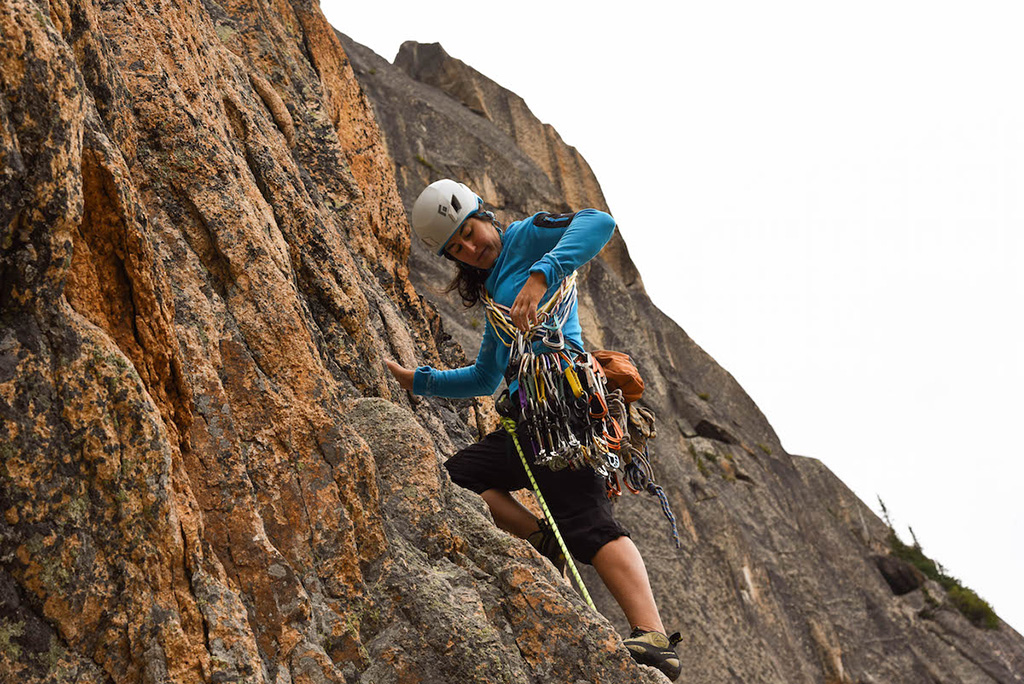
Climbing in the mountains has more variables and potential complications than an average day at the crag. Ease up on the technical difficulty while getting used to route finding, reading weather and managing big exposure. In general, aim to find a route that is well within your skill level and possibly even a few grades below your leading limit.
Manage time carefully
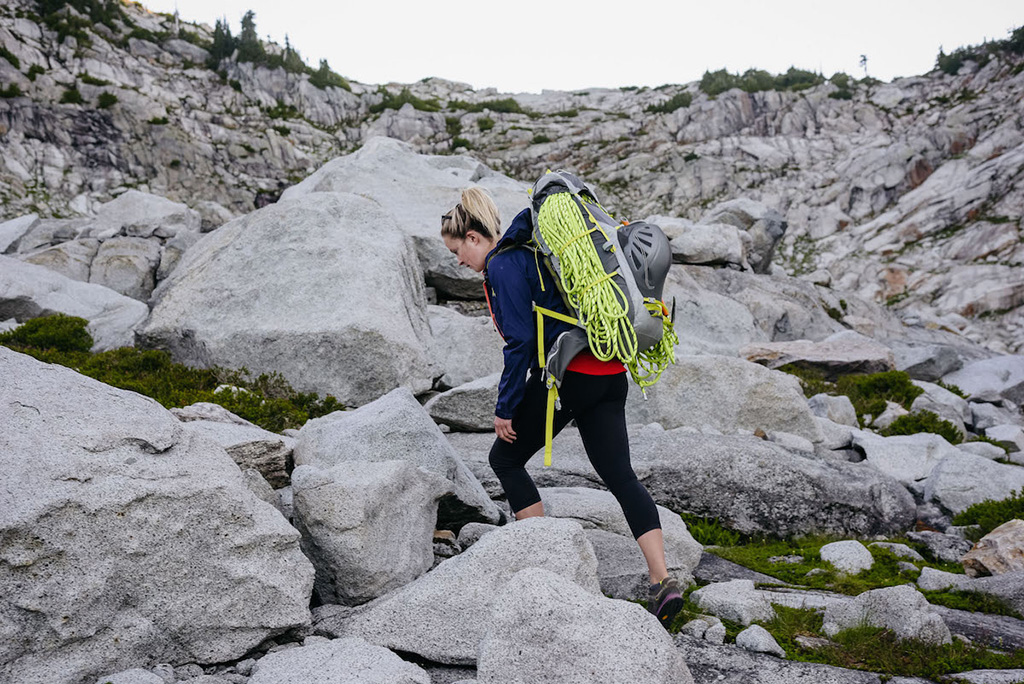
A few simple calculations will help you create a timetable to plan your day and track your progress while climbing. Start by estimating the approach. A rough calculation for hiking with a loaded pack is 30 minutes per mile plus an additional 30 minutes for every 1000 feet of elevation gain. Next, consider the length of the route, grade, type of protection, and number of pitches to determine how many hours you expect to be climbing. Then check out the descent—is it a walk-off or rappel? How long do you expect it to take? Reference past trip reports, a good guidebook and local topographical maps to get the lay of the land. Also, write down the times of sunrise and sunset.
Once you’ve estimated the amount of time you’ll be moving, count backwards. Decide when to leave the car, when you expect to begin climbing, an absolute turn-around time, and an estimate of when you should be back at your car. If it seems like you’ll be cutting it close and could get caught out in the dark then consider a bivy the night before—either at the trailhead or near the base of the route—to get an even earlier start and buy more time.
Make a list and check it twice
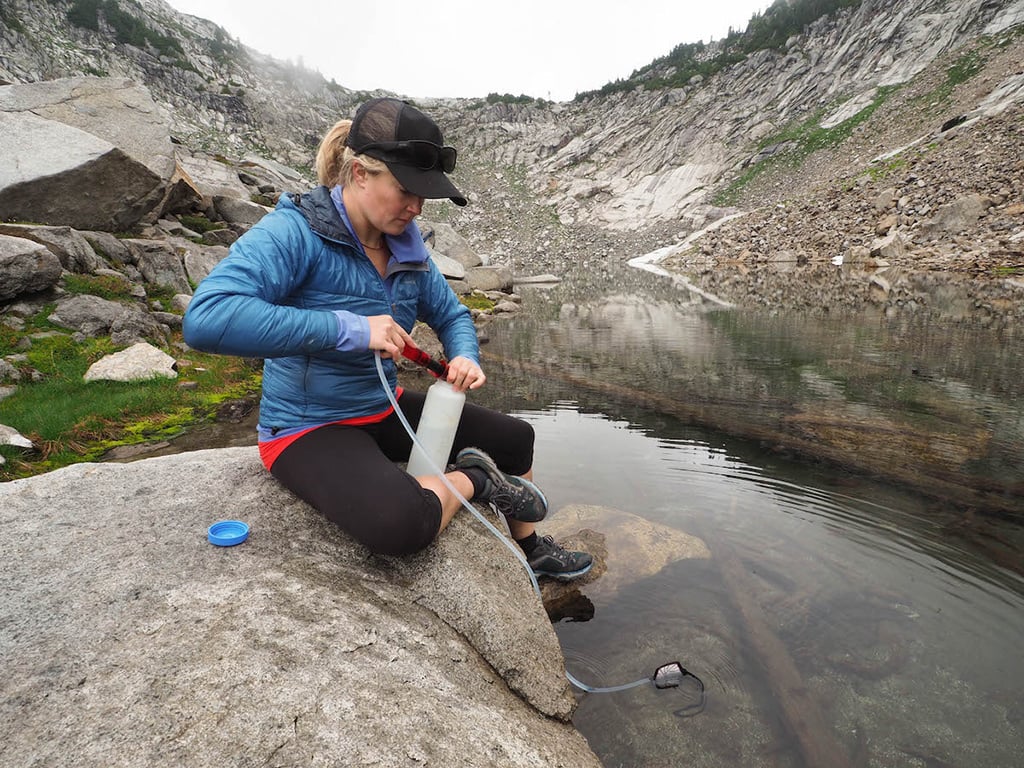
Avoid leaving behind essentials by creating a gear list and coordinating with your partner to make sure everything gets put in a pack.
I prefer to lay out all the gear that I’ll need (and snap the obligatory Instagram pic of course), and then double check trip reports and route descriptions to make I’ve got the right rack. Alpine routes often require a 70 or two 60 meter ropes for longer rappels—a 35-meter rappel cannot be done with a 60 meter rope, trust me. Avoid the temptation to throw in a fist-full of extras “just in case.” My favorite gear essential: A compact water filter—it weighs less and packs smaller than extra liters of water, plus I get to drink from cold mountain streams.
Load everything into your pack the night before you plan to climb so that it’s ready to go when the alarm goes off. Digging through the back of a Rav4 while trying desperately to find missing chapstick is not fun at three in the morning.
Go old-school with topos
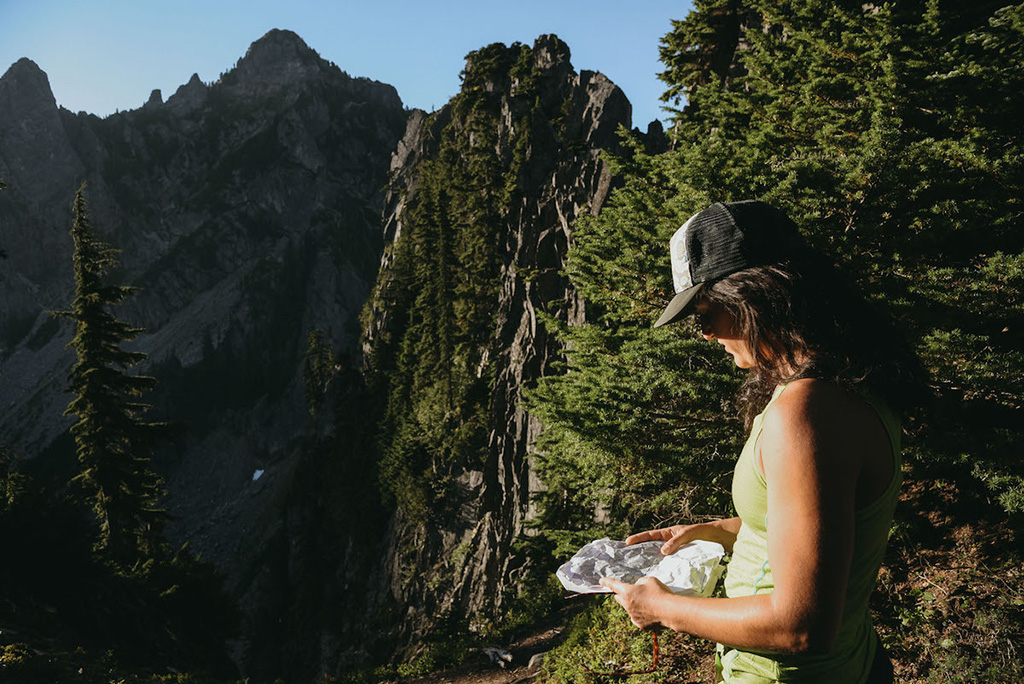
With so many GPS gadgets and numerous apps on the market, it might seem like paper topos have gone the way of hemp ropes—but don’t be fooled. iPhones lose power quickly in cold temperatures. Apps can be buggy or dependent on cell service. And a GPS unit might tell you exactly where you are, but it will never tell you what the belay looks like on pitch 4. Take an honest-to-goodness paper copy of a topographical map, the route description, and a route topo if available. You can back-up these printouts with whatever digital method you like, but don’t leave the real thing behind. Pro-tip: stash the print-outs in a plastic bag.
Know when to walk away
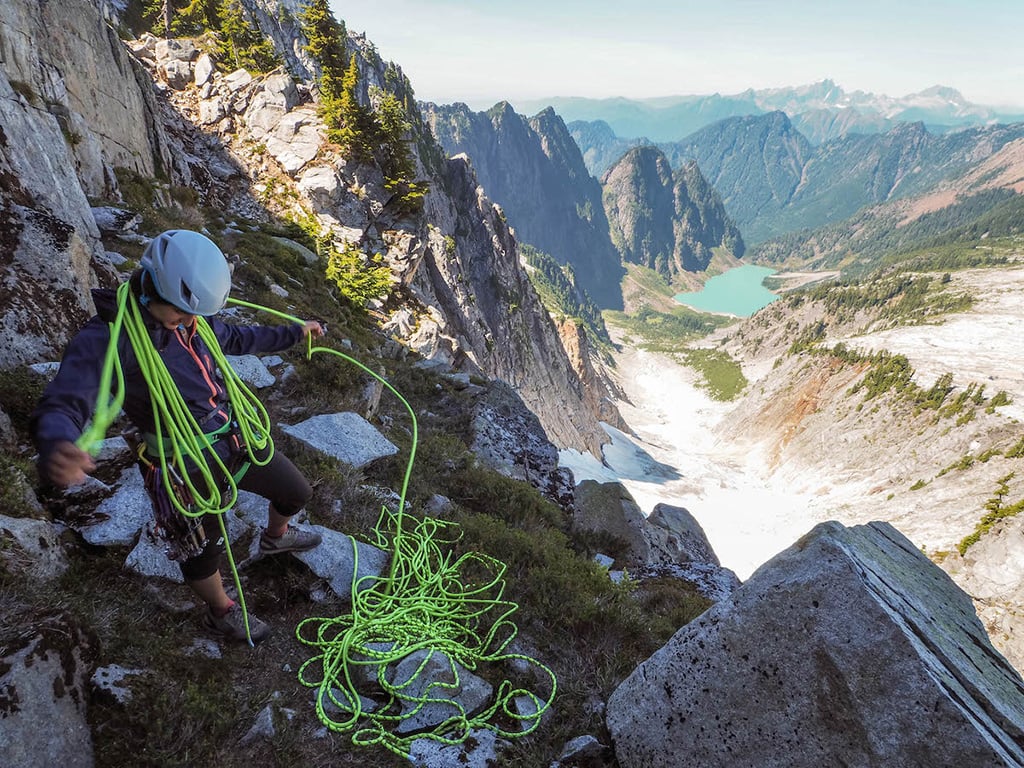
Alpine climbing can be entirely unpredictable. Before heading out, chat with your partner about the types of risks you are both willing and unwilling to face and keep that in mind as you make decisions. Trust your instincts and remember that turning back is part of the experience of climbing in the mountains. Don’t be short-sighted: success is not always about reaching the summit at all costs … it’s about living to tell your story over a cold one at the bar.
Originally Published September 13, 2016
 Julie Parker has a (mostly) healthy addiction to climbing, backcountry skiing, trail running and fancy cheeses. When not roped to the side of a cliff, she can be found exploring the Western U.S. with her husband and personal barista, Chris, and coydog, Chief in a converted Sprinter van.
Julie Parker has a (mostly) healthy addiction to climbing, backcountry skiing, trail running and fancy cheeses. When not roped to the side of a cliff, she can be found exploring the Western U.S. with her husband and personal barista, Chris, and coydog, Chief in a converted Sprinter van.
